Even if it weren't rainy and getting dark outside, this isn't the most appealing view I've ever had from a hotel window:
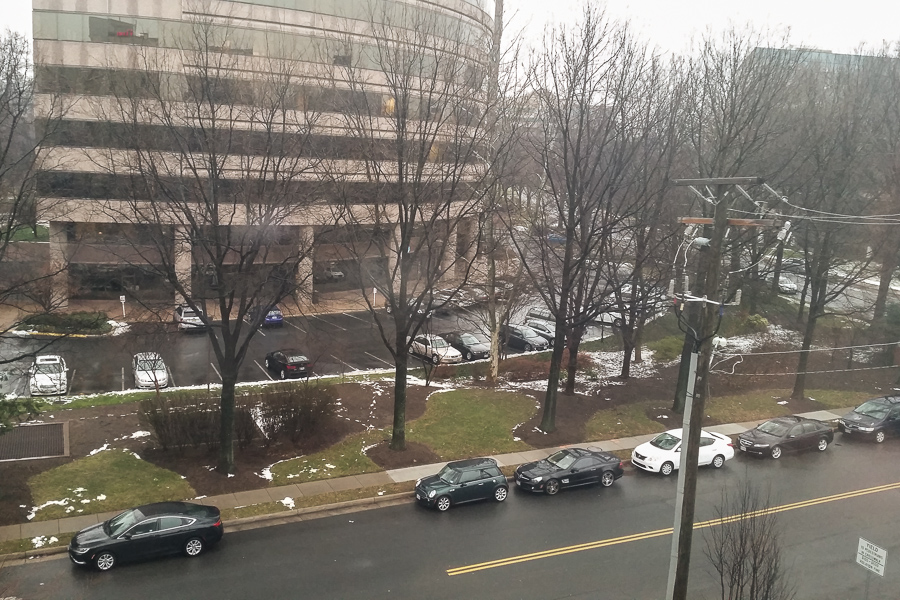
At least I've managed to convince some of my team to head into the District for dinner tonight.
Back in July, I turned off the motion sensor on a hotel thermostat so that it would cease cycling the A/C and waking me up whenever I stopped moving (which one does when one falls asleep).
Now I'm at a Hilton Garden Inn outside Washington and the thermostat may have a motion sensor, but it's not clear. It has an all-or-nothing understanding of how to heat or cool a room, and it's paired with a very loud HVAC unit.
Fitbit says I got more than 6 hours of sleep last night because the Fitbit device doesn't sense when something wakes you up and you lie still, silently curse mechanical engineers everywhere, without actually moving your arm. (It did log 15 "restless" incidents spaced at regular intervals, however.)
Must...get...caffeine...
One of the consequences of being willing to jump on an airplane to take care of a client matter is, of course, one gets sent places to take care of client matters. And this is how I find myself, not yet a full week into my new job, in Northern Virginia.
At least it's above freezing here, so I got my Fitbit goals for the day. Plus, it looks like I'll hit 1 million lifetime steps either tomorrow or Tuesday—"lifetime" counted from when I joined Fitbit in October. So that's kind of cool.
Also, I once again have to say how much I like flying in American's new 737-800 planes.
Therefore, another link round-up:
There are a couple of other articles on my Kindle too, I just haven't got time to link them.
Writing in today's Times, Richard Florida explains the long-term costs of red state/blue state differences:
The idea that the red states can enjoy the benefits provided by the blue states without helping to pay for them (and while poaching their industries with the promise of low taxes and regulations) is as irresponsible and destructive of our national future as it is hypocritical.
But that is exactly the mantra of the growing ranks of red state politicos. Gov. Rick Perry of Texas, a likely 2016 G.O.P. presidential candidate, has taken to bragging that his state’s low-frills development strategy provides a model for the nation as a whole. But fracking and sprawling your way to growth aren’t a sustainable national economic strategy.
The allure of cheap growth has handed the red states a distinct political advantage. ... As long as the highly gerrymandered red states can keep on delivering the economic goods to their voters, concerted federal action on transportation, infrastructure, sustainability, education, a rational immigration policy and a strengthened social safety net will remain out of reach. These are investments that the future prosperity of the nation, in red states and blue states alike, requires.
The article has a chart showing the relationship between affordable housing and the 2012 election. It turns out, San Francisco and New York are the bluest and most expensive cities, while Tulsa, Okla. and Knoxville, Tenn. are the cheap, red cities. Chicago shows up well: more than 2/3 of housing is affordable to the local middle class, and we went pretty strongly for our man Barack.
Simple: Go down to Amundsen-Scott Station and walk around the pole.
But if you don't want to cheat, get a very fast airplane:
Jeremy Newton is an Air Force veteran who flew F-18s, but, when contacted by e-mail, suggested the F-22 for a variety of reasons. First, it can fly at 1.5 Mach (about 1,000 mph) without using its afterburner, meaning it burns much less fuel. It tops out at 2 Mach, though that burns more fuel. Second, it can refuel in 10 minutes -- in mid-air while traveling at 400 mph. And third, as the video shows, it can go from full speed to full stop in under four minutes, and to top speed at 30,000 feet in under 5 minutes.
If you don't have access to military hardware, you can still probably hit the four time zones in the United States in that Gulfstream, although you'd be touching down in less exciting locales. (Unless you love the Upper Plains, in which case: go for it.)
The maximum number of time zones you can hit by plane depends on the plane, of course, and on how much you're willing to push it. It seems as though the Gulfstream could get you from GMT+11 to Greenwich Mean Time -- on one tank of gas. The Raptor can do a little better, from GMT+12 to GMT-1, as on the map below.
This is, of course, silly. But it's close to a plan I have on my bucket list: on the June solstice, see the sun rise over Passamaquoddy Bay near Lubec, Maine, and see it set over the Pacific Ocean near the Makah Indian Reservation in Washington. I'd bet you can even do that taking commercial flights.
The brilliant Central Coast morning that produced the photo I posted earlier gave me a hell of a view climbing out of SFO an hour ago:
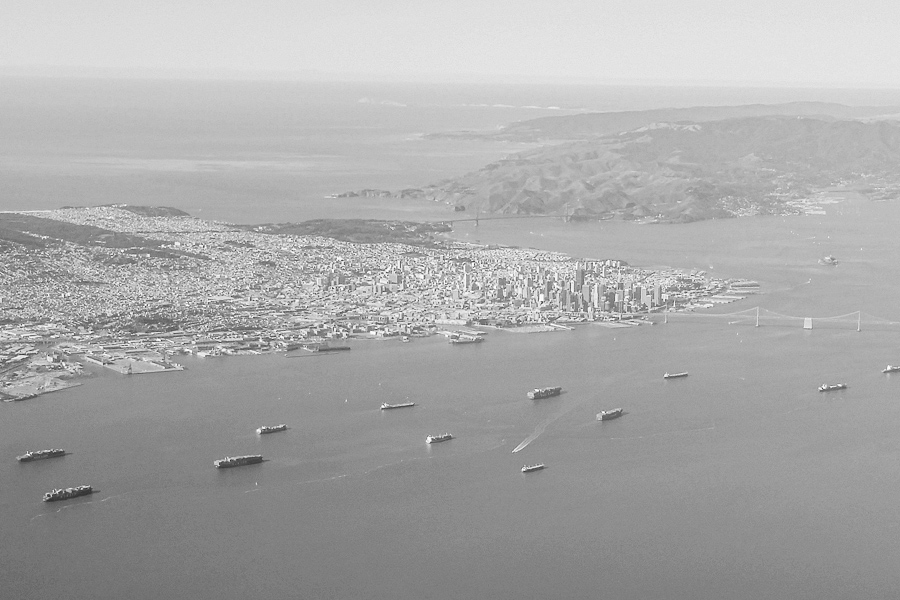
Home in four hours...
...I stopped here one more time this morning:
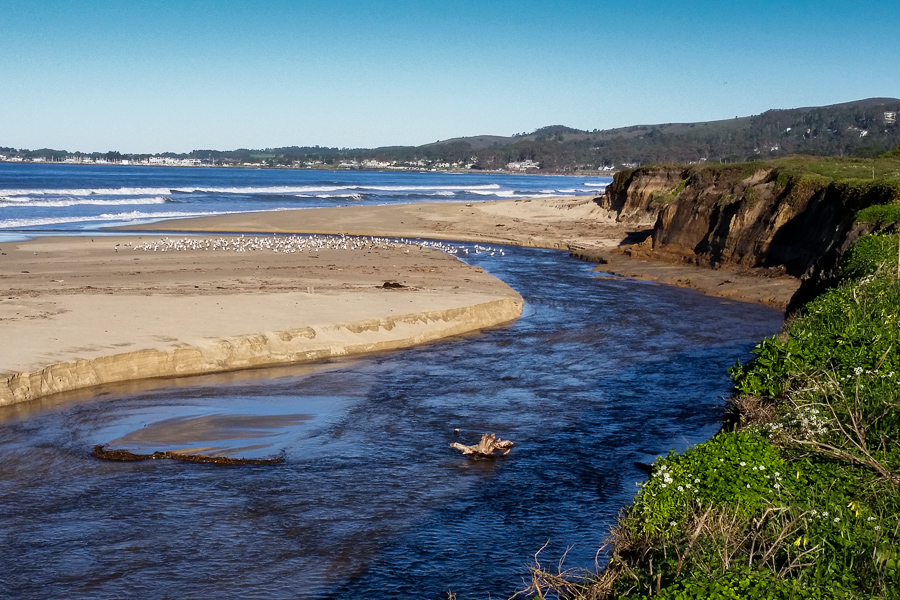
At the moment Chicago's weather isn't too bad. At the moment. But it's still nothing like this.
By the way, I've actually reduced the saturation in this photo a bit. The sun was directly behind me and relatively low on the horizon, so the colors in this shot are very close to what I saw.
I only got 13,000 steps yesterday owing to Christmas Eve dinner and some ill-timed rain. (Perhaps 25,000 may have been too ambitious?) This included two walks around Half Moon Bay State Beach:
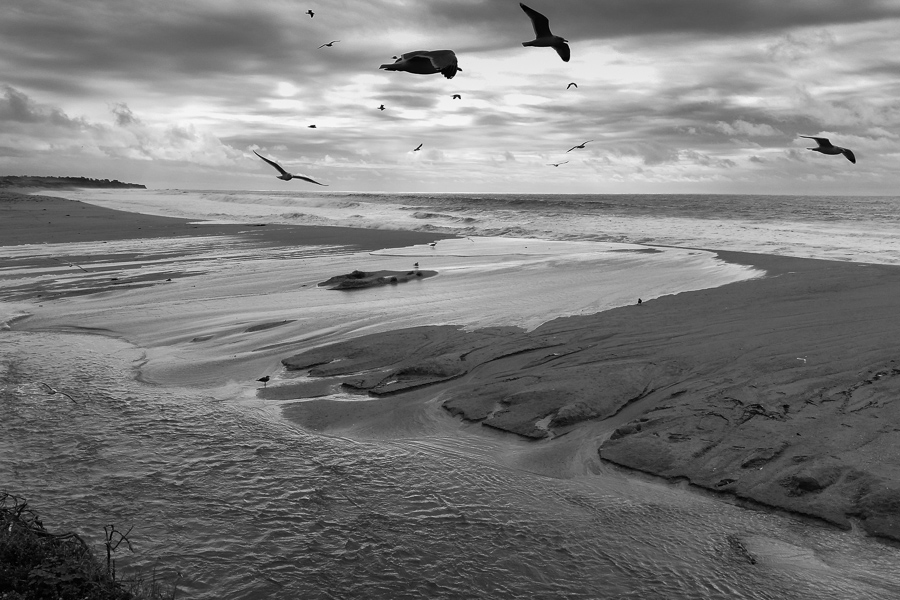
I even shot some video, in the stiff breeze:
Later, we went to Christmas Eve dinner, where poor Roger once again had to wear a Santa suit:

Yesterday, the majority of weather models forecast a major winter storm over Chicago that was going to snarl traffic, ground airplanes, and make life a living hell for several friends of mine. One of the models had a slightly different prediction, however. Looks like the minority opinion was right:
The northbound storm driving Chicago’s Christmas Eve 2014 rainfall is going to have a hard time producing the kind of cooling which would support big snow accumulations. It’s been clear from the range of forecasts covering aspects of the storms development and movement that this system’s ability to generate snow may well be limited by the warm environment in which it springs to life. While bursts of wet snowflakes may well wind up in Wed afternoon and evening’s precipitation mix, it’s hard to see how snowfall of an intensity to do more than just dust the warm ground or produce minor transitory accumulations, expecting more of this storm will be a tough sell.
Because the system part of an environment awash in mild air, Wednesday’s Christmas Eve storm is in a position in which it must generate its own cold air through storm dynamics (i.e. the ascension and resultant cooling of air brought on by the storm’s intensification). Such cooling may well happen to Chicago’s east from sections of Indiana near Valparaiso north into Michigan City, Benton Harbor, Muskegon, etc–regions likely to sit beneath the storm’s strongest dynamics and, therefore, the area most likely to experience the kind of cooling which may take rain over to snow long enough to produce more than the dusting to 2″ accumulations predicted by our team to occur in the greater Chicago area.
In other words, Chicago will be wet and cold, but not snowy. Life goes on.
Of course, none of this would affect me today, because I'm back here for the holiday:
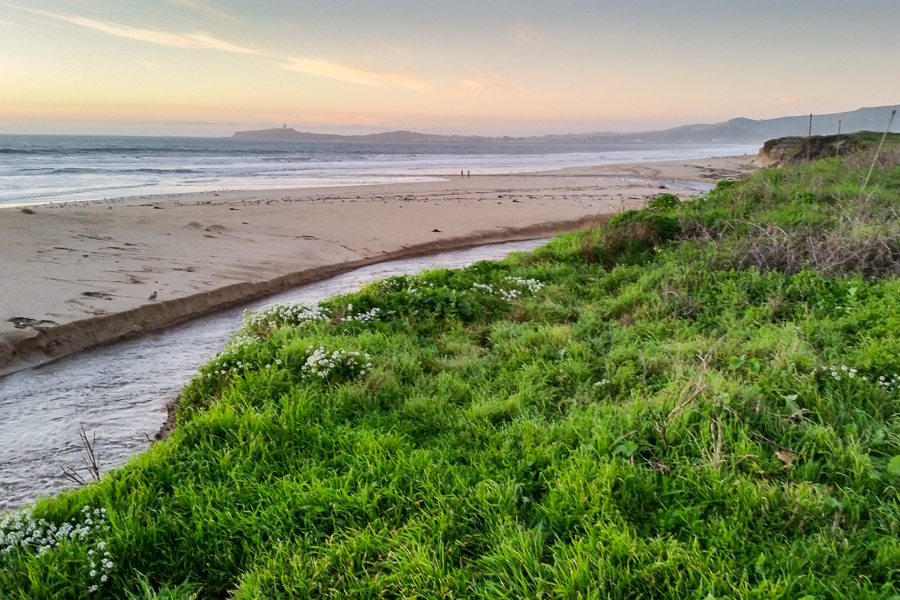
Today it's misty and damp on the peninsula, so I might not hit my Fitbit goal today. But I'm still warmer than I'd be back home.